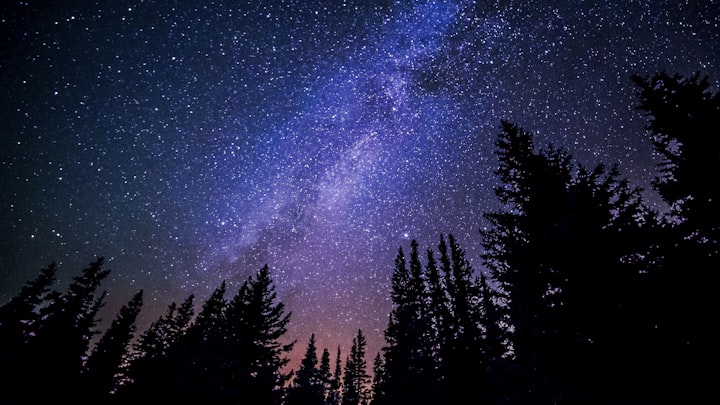
The Yellow Flick Road
By Antonio Jacobs
July 2, 2004
Since its MGM release in 1939, The Wizard of Oz has captivated the attention of children and adults alike. Songs like “Somewhere Over the Rainbow” and “We’re Off to See the Wizard” are as prevalent as nursery rhymes. Quotes from the classic film pop up in everyday conversation, as well as in movies, books, magazines and newspaper articles.
And yet, are we really aware of the phenomenal impact The Wizard of Oz has had on American culture? When L. Frank Baum first completed The Wonderful Wizard of Oz in 1900, his mission was to create the great American myth. With a life and energy of its own, The Wizard of Oz has outgrown its creator’s original lofty goal to become the template of every American film made since. By providing a landscape and mold for character design in Dorothy and her Ozian companions, Baum unwittingly influenced all cinema in the twentieth century.
Big claim. But one only has to watch The Matrix to see that not only has moviemaking been influenced by The Wizard of Oz, the film industry has been unable to break from that influence. Every Oscar-winning film, every blockbuster, every drama, comedy, action/adventure, musical and horror film is based on The Wizard of Oz. Every director, every actor, every cinematographer, and costume designer has a little Oz in them.
The evidence of this influence is rampant. From the obvious (“Buckle your seat, Dorothy, ‘cuz Kansas is going bye-bye” from The Matrix) to the sublime (“May the Force be with you” from Star Wars) to the obscure (Buddy Epsen in Breakfast at Tiffany’s) to the bleak (Stanley Kubrick eliminated Dorothy from all his pictures), Baum, if alive today, would look back upon his creation with pride and be justified in declaring like Ozymandias, “look upon my mighty works and despair!”
Further writings on this subject include essays on the soundness of the Yellow Flick Theory, movie reviews (comparing recent releases and classics to The Wizard of Oz), articles on prominent actors (Is Bruce Willis a Tinman or a Lion?), and five things you’ll find in any movie that ties directly to The Wizard of Oz.
WHAT IS THE YELLOW FLICK ROAD?
Simply put, The Wizard of Oz is the template for every film ever made. No matter the movie, I can prove that it is based on the MGM classic.
How do I do this?
Well, one thing to look out for when watching any film is to find the Oz characters. Who is Dorothy? Not always the main character, Dorothy is almost always the strongest character. An actress such as Sally Field, is a prime candidate for Dorothy, having tackled powerful roles in Norma Rae and Steel Magnolias. Who is the Scarecrow? The smartest or dumbest character is applicable. Russell Crowe's Professor John Nash in A Beautiful Mind is a prime example of this, although there is some evidence to suggest that Nash is Dorothy, who has the ability to bring imaginary characters to life. Who is the Tin Man? Must we look any further than Arnold Schwarzenegger? Who is the Lion? Take Mel Gibson, who gravitates to roles that involve insane acts of courage and mental instability. Mad Max and Martin Riggs (of the Lethal Weapon series) are prime examples of this.
Now that you know what to look for, you can put this theory into practice. Who is the Wicked Witch? Who is the Wizard? Who is the good Witch of the North, et al. I can assure you, you can make even the worst movie into an enjoyable viewing by superimposing The World of Oz onto it. So the next time you're sitting through a stinker, try looking for Dorothy.
THE YELLOW FLICK ROAD IN PROSPECTUS
Skipping merrily down a road made of flicks is Arnold Schwarzenegger as The Terminator, Julie Andrews as Maria von Trapp from The Sound of Music, Dustin Hoffman from Rain Man, and Chewbacca from Star Wars. Can you match each character with their Ozian counterpart? It’s obvious, really. It is a testament to the tremendous influence of The Wizard of Oz, one of the finest, and enjoyable movies ever made. The MGM classic has paved the way for this ultimate testimonial; all one needs to create a great film is a brain, a heart, some courage and the means to go home.
I think the magnetic draw of the Yellow Flick Road is in its mission – “all films are based on The Wizard of Oz.” That statement alone breeds further discussion, interest and at the worse, controversy. It is this quality that gives this theory life, and to an extent, sentience. The advantage to a publisher who invests in an endeavor like this is in its myriad of thematic possibilities.
For the popular audience, the Yellow Flick Road is presented as a way to combat cynicism when scrutinizing the latest blockbuster, tearjerker or action/adventure. Many audience members have an attitude of “it’s all been done before.” Why not capitalize on that? Not only does The Wizard of Oz provide an ideal template for comparison, it is a film that raises the bar on all areas of quality control, from special effects to human rights.
As a result, The Yellow Flick Road presents with a built-in following; that of the film buff, who will enjoy proving (or debunking) the theory. Its pop psychology appeal will attract the same groups who watch Mystery Science Theatre 3000 on one end to folks who enjoy Oprah or Dr. Phil on the other end. Hardcore analysts of Oz, such as Michael Patrick Hearn or Mark Evan Swartz have little to fear from this contribution, due to its light touch and accessibility.
The Yellow Flick Road, like The Wizard of Oz, has a life of its own. As Baum’s initial story spawned a dozen films and scores of literary adventures, so does the Yellow Flick theory extend to include movie reviews, analysis, character development, celebrity profiles and comparative writings. From The Piano to The Pianist, from Birth of A Nation to Death of a Salesman; as long as there are movies, the theory is inexhaustible.
Of course, the theory all begins with a rulebook or play book to provide structure, while leaving enough room for individual interpretation. I expect the book to be 150-250 pages in length, including sample movie reviews and a couple of personality profiles of Hollywood’s biggest and brightest stars. With adequate support and research, a solid draft is attainable in six months.
------------
About the author: Antonio has written essays for the New York City Writing Project, and is a talented artist, songwriter and composer. Obviously, Antonio is a movie buff, and will watch anything. Currently, he is writing movie reviews for every film ever made.
Antonio Jacobs received his Masters of Music from Northwestern University. In 1999, Antonio developed a theory concerning the cinema, and his been obsessed about it ever since. His book, The Yellow Flick Road, is available on lulu.com. Visit THE YELLOW FLICK ROAD on FaceBook to learn more.
About the Creator
Antonio Jacobs
A lifelong New Yorker, Antonio writes fiction and non-fiction and is a musicologist who believes that The Wizard of Oz is the template for all films ever made.






Comments
There are no comments for this story
Be the first to respond and start the conversation.